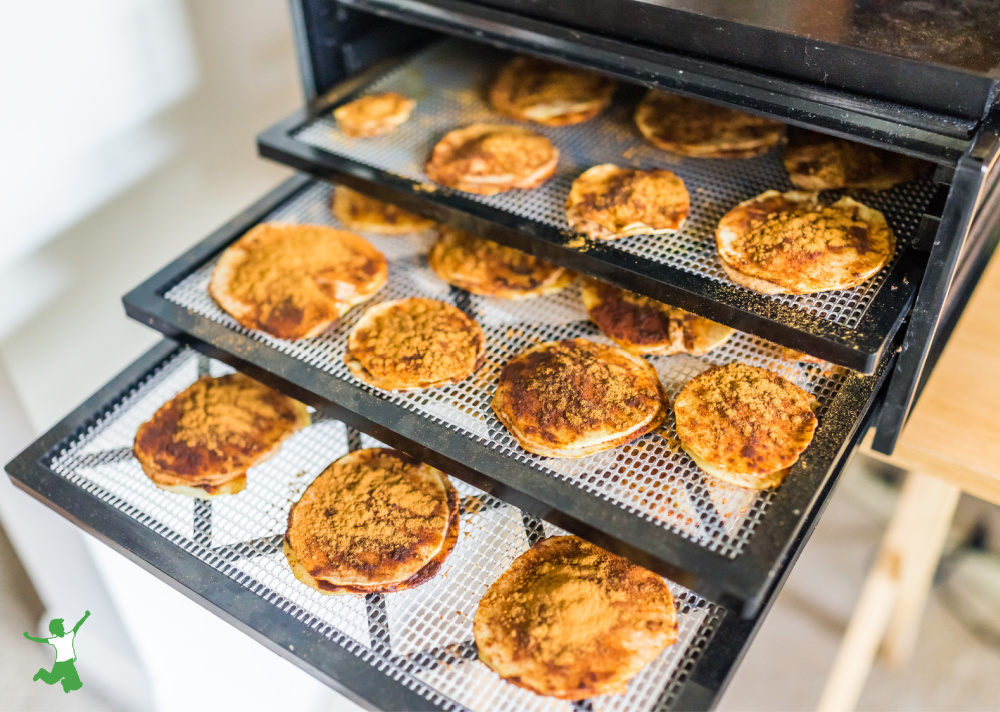Table of Contents[Hide][Show]
Examination of the difference between wet and dry heat, how it affects enzymes and probiotics, and what temperatures are necessary to preserve “rawness” in food.

My article and video on soaking raw nuts often elicit questions from traditional foodies, particularly regarding the proper temperature to preserve food enzymes and probiotics when you are drying them.
In that video, I demonstrate how to properly soak raw nuts in brine water and then dry them in a warm oven set at 150 °F/66 °C.
This practice deactivates anti-nutrients and ensures maximum digestibility and nutrient absorption.
This method is in accordance with the wise preparation methods of ancestral societies that consumed nuts.
Numerous comments on the article itself, my YouTube Channel, email, and social media insist that drying nuts at the suggested 150 °F/66 °C is far too high and that the food enzymes are destroyed.
So, what’s the truth? Are nuts dried in a warm oven set at 150 °F/66 °C still raw or not?
Food Enzymes: Wet vs Dry Heat
The confusion seems to rest with the difference between wet heat and dry heat.
When a liquid food like milk is heated, you will find that you burn your finger at a temperature of 118 °F/48 °C.
If the milk is heated only to 117 °F/47 °C, you will not burn yourself!
This is nature’s magical way of letting us know that the food still has all of its enzymes intact.
Hence, low temp or vat pasteurized milk heated to 145 °F/63 °C is still just as dead as regularly pasteurized milk heated to 160+ °F, despite rumors to the contrary.
This is true even if it is non-homogenized, aka “cream top” milk.
Food enzymes and probiotics withstand dry heat much better than wet heat.
According to food scientist Dr. Mary Enig:
All enzymes are deactivated at a wet-heat temperature of 118 degrees Fahrenheit, and a dry-heat temperature of about 150 degrees [66 °C].
It is one of those happy designs of nature that foods and liquids at 117 degrees [47 °C] can be touched without pain, but liquids over 118 degrees [48 °C] will burn. Thus we have a built-in mechanism for determining whether or not the food we are eating still contains its enzyme content. (1)
I hope this information clears up the confusion about drying raw nuts in the oven and whether or not the food enzymes are still intact.
It is especially important to harness the convenience of drying large batches of raw food in the oven as not everyone has access to or can afford a large dehydrator.
Dry Heat Home Test
If you are still unconvinced that a dry heat temperature of 150 °F/66 °C does not harm food enzymes, try this at home.
Eat a handful of raw soaked nuts dried at 150 °F/66 °C straight out of the oven.
You will be delighted to see that the nuts are not hot and that you do not burn your hand or mouth, an indication that the food enzymes are indeed preserved.
By the way, stainless steel dehydrators are much safer to use than plastic ones if you choose to go that route.
(1) Enzymes








Most ovens don’t go below 170°F.
If you check your user manual, there is typically a way to adjust it down by 20 degrees or so. 170 F is just the default setting.
I’ve noticed that directly after baking my sourdough rye bread does not taste sour at all, but 2 days later it is very sour. How does that work? 2nd: I’ve heard about people making a new starter with sourdough bread crumbs. That this goes a heck of a lot faster than using flour alone.
Thank you for covering this topic! I saw this information elsewhere on the web and turned to you for confirmation.